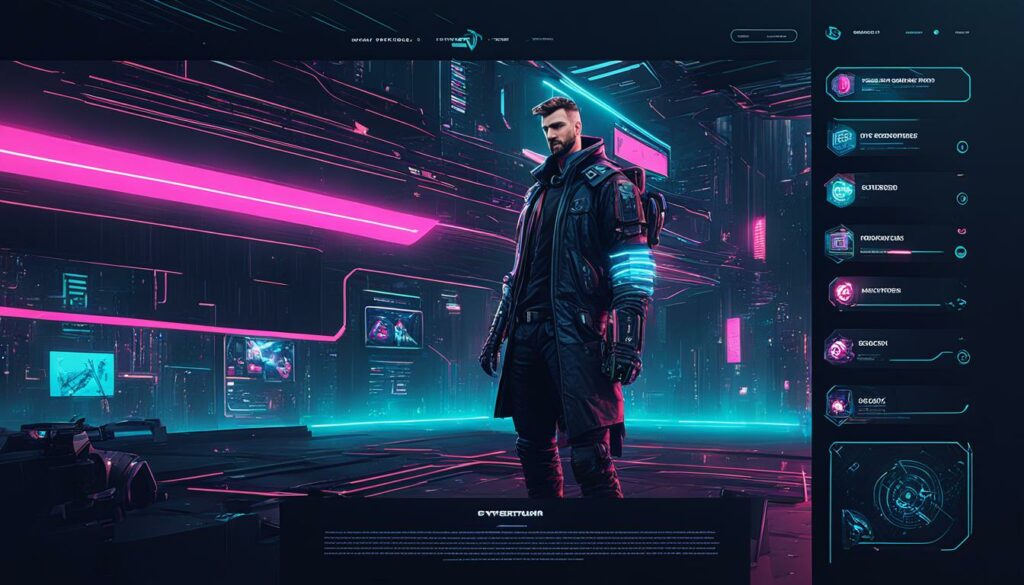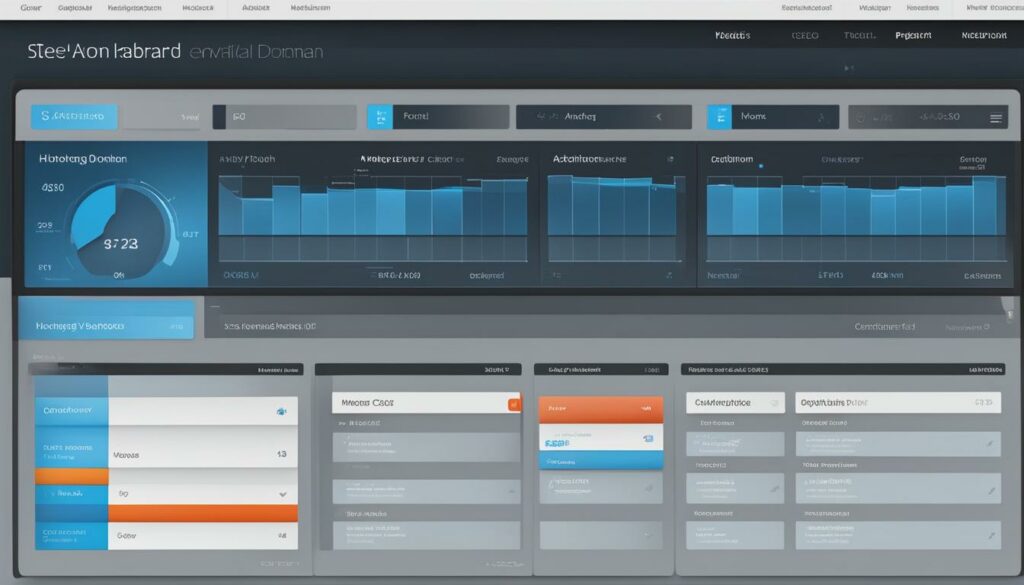Are you looking for ways to boost engagement on your website? Want to harness the power of social media to attract and connect with your audience? Discover the benefits of social media integration for websites and learn how to take your digital marketing strategy to the next level.
In today’s digital landscape, social media plays a crucial role in marketing success. But simply having a social media presence is not enough. To truly engage your audience and drive results, you need to integrate social media into every aspect of your website and marketing strategy.
From adding social buttons and share buttons to showcasing user-generated content and leveraging hashtags, there are numerous ways to seamlessly integrate social media into your website. By doing so, you can create a dynamic and interactive online experience for your visitors while increasing your brand’s reach and social influence.
In this article, we will dive deep into the world of social media integration for websites. You will discover the meaning of social media integration, explore real-world examples of successful integration strategies, and learn how to leverage social feeds, buttons, and hashtags to maximize engagement. Get ready to unlock the full potential of social media and take your website to new heights!
Key Takeaways:
- Social media integration is a fundamental aspect of digital marketing strategies.
- Integrating social media into your website can boost engagement and online presence.
- Examples of social media integration include social share buttons, user-generated content, embedded social posts, and automated product sharing.
- Social feeds and social buttons can increase trust, authenticity, and user interaction on your website.
- Leveraging hashtags and user-generated content enhances social sharing and word-of-mouth marketing.
What is Social Media Integration?
Social media integration plays a crucial role in any marketing strategy, serving as the foundation for successful campaigns. It involves incorporating social media channels into every aspect of your marketing efforts, extending beyond mere content posting. By integrating social channels into your website, email campaigns, CRM software, e-commerce platforms, and customer service software, you create a cohesive and dynamic marketing ecosystem. To achieve this seamless integration, smart tools can be utilized to connect, automate, and measure your social media activities.
Connecting your Marketing Channels
Social media integration brings your marketing channels together, allowing for a cohesive strategy and consistent messaging across platforms. By integrating social media into your website, you create a direct connection between your brand and your target audience. This integration empowers visitors to easily discover and engage with your social channels, increasing brand visibility and establishing a robust online presence.
Automating your Social Activities
Smart tools enable you to streamline and automate your social media activities, saving valuable time and resources. With automation, you can schedule and publish social media content in advance, ensuring a consistent flow of relevant and engaging posts. Furthermore, automation enables you to monitor and respond to social interactions efficiently, enhancing your overall customer experience.
Measuring your Social Media Performance
Integrating social media tracking tools provides valuable insights into the effectiveness of your marketing campaigns. By implementing analytics and monitoring tools, you can measure key performance indicators such as engagement, reach, and conversions. These metrics allow you to make data-driven decisions, optimize your marketing strategy, and maximize your social media ROI.
Examples of Social Media Integration
Integrating social media into your website opens up a world of possibilities for engagement and interaction. Here are some practical examples of how you can incorporate social media into your website:
Add Social Share Buttons
Increase the reach of your blog posts and other content by adding social share buttons. These buttons allow visitors to easily share your content on their favorite social media platforms with just a click. This can help drive more traffic to your website and expand your brand’s online presence.
Showcase User-Generated Content
Utilize the power of user-generated content as social proof on your website. Feature photos, videos, or testimonials from happy customers to provide authenticity and build trust. This not only engages your audience but also encourages others to share their experiences, creating a sense of community around your brand.
Embed Social Media Posts
Bring the conversation and interactions happening on social media platforms directly onto your website by embedding social media posts. This allows visitors to see real-time social media content such as tweets, Facebook posts, or Instagram images and videos without leaving your site. It enhances the overall user experience and increases engagement.
Automate Product Sharing
Make it easy for customers to share their purchases and experiences by automating product sharing on social media. By integrating your e-commerce platform with social media, customers can share their favorite products with their social networks, increasing visibility and driving potential sales.
Build a Social Community
Encourage interaction and connection among your website visitors by creating a social community. This could be in the form of a forum, a comment section, or a dedicated social media group where people can discuss topics related to your brand or industry. By fostering a social community, you can foster loyalty, establish yourself as an authority, and gain valuable insights.
Run Cohesive Campaigns
Ensure consistency across your marketing efforts by running cohesive campaigns that span your website and social media platforms. By aligning your messaging, visuals, and user experience, you create a seamless brand presence that resonates with your audience. This holistic approach enhances engagement and strengthens your overall marketing strategy.
Utilize Social Media for Customer Service
Enhance your customer service efforts by integrating social media into your support channels. Many customers turn to social media platforms to seek assistance or voice their concerns. By promptly responding and resolving issues on social media, you demonstrate the value you place on customer satisfaction and foster positive relationships.
| Benefits of Social Media Integration on Your Website | |
|---|---|
| Increased reach and brand visibility | If visitors share your content, it can reach a wider audience and improve your website’s visibility online. |
| Higher engagement and interactions | Integration encourages visitors to engage with your brand, leading to increased interactions and longer time spent on your website. |
| Social proof and trust-building | Featuring user-generated content and testimonials creates social proof, helping build trust with potential customers. |
| Improved customer service | Using social media for customer service allows for faster response times, personalized assistance, and public resolutions. |
| Opportunity for cohesive campaigns | Running synchronized campaigns both on your website and social media amplifies your message and strengthens your brand identity. |
Integrating social media into your website opens up a world of possibilities for engagement and interaction. By leveraging social share buttons, user-generated content, embedded social posts, automated product sharing, social community building, cohesive campaigns, and customer service on social media, you can create a dynamic and cohesive online presence.

Integrating Social Feeds on Your Website
Social media feeds, including Instagram feeds, are powerful tools for integrating user-generated content and showcasing social proof on your website. By incorporating these feeds, you can build trust with your visitors and create an authentic online presence. Featuring customer photos and videos not only engages your audience but also prolongs their time spent on your website. Social feeds can be self-updating, ensuring that your website remains dynamic and attracts more traffic.
One effective way to feature social feeds on your website is by embedding Instagram feeds. Instagram, being a visual platform, is perfect for displaying compelling and visually appealing user-generated content. By integrating Instagram feeds directly into your website, you can leverage the captivating visuals and social proof created by your customers.
Embedding Instagram Feeds
To embed Instagram feeds on your website, you can utilize Instagram’s embedding feature, which allows you to display a curated selection of posts from your account or a specific hashtag. This feature provides a seamless experience for your website visitors, as they can view the content without leaving your site.
Integrating Instagram feeds on your website not only showcases user-generated content but also serves as social proof, as potential customers see real people enjoying and endorsing your brand. This visual social proof can greatly influence their decision-making process.
By integrating social media feeds into your website design, you can leverage the power of user-generated content and visual content. This integration enhances your website’s credibility by demonstrating the positive experiences and interactions of your customers. It also encourages visitors to engage with your brand and increases the likelihood of conversions.
Next, we will explore the importance of adding social buttons and share buttons to amplify the reach of your website content.

Adding Social Buttons and Share Buttons
Social buttons and share buttons are essential tools for enhancing the social media presence of your website. By strategically placing these buttons, you can encourage visitors to follow your social channels and easily share your content, significantly expanding your reach and engagement.
These buttons enable your audience to stay updated with your latest posts and easily share them with their network, allowing you to connect with a larger audience. By integrating social buttons and share buttons, you can tap into the power of social media and leverage it to grow your online presence.
When adding social buttons and share buttons to your website, it’s important to consider the layout and color scheme. They should be prominently displayed but remain subtle enough to blend seamlessly with your overall design. It’s also crucial to only highlight the active social platforms where your brand is actively engaged.
“Social buttons and share buttons are like friendly beacons that guide visitors to your social channels and invite them to share your content, expanding your online influence.”
You can implement social buttons and share buttons in a variety of ways:
- Place social buttons on your website header or footer so they are easily accessible on every page.
- Embed share buttons next to your blog or article content, allowing readers to quickly share your insights.
- Add social buttons in your email newsletters to encourage subscribers to follow your social channels.
- Integrate share buttons on product pages, enabling customers to share their favorite items with their followers.
Remember, the strategic placement of social buttons and share buttons can have a significant impact on your website’s social media integration efforts. By making it simple for visitors to follow and share your content, you’ll foster a strong online community and maximize the organic reach of your brand.
Leveraging Hashtags and User-Generated Content
Hashtags are a powerful tool for creating a hub of discussion and sharing around your brand’s products. By using relevant hashtags, you can connect with your target audience and encourage them to participate in conversations on social media.
But hashtags don’t just have to live on social media platforms. You can also promote them on your website, inviting visitors to use them when sharing their experiences with your products. By featuring user-generated content tagged with these hashtags on your website, you can provide social proof and authenticity to potential customers.
When visitors see real people using your products and sharing their positive experiences, it builds trust and credibility. User-generated content serves as a testimony to the quality and value of your products, influencing others to make a purchase.
In addition to showcasing user-generated content, you can also leverage social sharing on your product pages. By including social sharing buttons, you make it easy for your customers to share content from your website to their personal social channels. This not only increases brand visibility but also serves as a form of word-of-mouth marketing, as their friends and followers see their recommendations.
Visual content is particularly effective for social sharing. Whether it’s a stunning product photo or a captivating video, visuals are more likely to catch the attention of users and elicit engagement. When users share visual content from your website, it generates social influence and drives traffic back to your site.
Key Takeaways
- Hashtags create a hub of discussion and sharing for your brand.
- Promote hashtags on your website to encourage visitors to use them on social media.
- Feature user-generated content tagged with specific hashtags for social proof.
- Include social sharing buttons on product pages for easy content sharing.
- Visual content is more likely to be shared and generate social influence.
| Hashtags and User-Generated Content | Social Sharing and Visual Content |
|---|---|
| #CreateConversations | Share visually appealing product photos |
| #AuthenticExperiences | Encourage users to share videos of their experiences |
| #SocialProofMatters | Make it easy for users to share content with social sharing buttons |
| #InfluencerImpact | Visual content generates social influence and drives traffic |

Conclusion
Integrating social media into your website is a crucial component of a successful marketing strategy. By incorporating social media channels throughout your website, you can effectively engage your audience, establish social proof through user-generated content, and expand your online reach.
Social buttons, such as follow and share buttons, play a significant role in integrating social media into your website. They allow visitors to easily connect with your brand on different social platforms and share your content with their networks, increasing brand visibility and driving traffic to your website.
Hashtags also play a vital role in social media integration. By creating branded hashtags and encouraging users to share their content with these hashtags, you can create a thriving community around your brand. Additionally, featuring user-generated content on your website, tagged with specific hashtags, not only provides social proof but also fosters a sense of authenticity and trust among your audience.
Social feeds, such as Instagram feeds, are another powerful tool for integrating social media into your website. By displaying user-generated content and social media posts on your website, you can engage your audience, showcase real-life experiences with your brand, and create a dynamic and visually appealing website.
FAQ
Q: What is social media integration?
A: Social media integration refers to incorporating social media channels into various aspects of a marketing strategy, including websites, email campaigns, CRM software, e-commerce platforms, and customer service software. It involves using smart tools to connect, automate, and measure social media activities.
Q: How can social media be integrated into a website?
A: Social media can be integrated into a website in various ways, such as adding social share buttons to blog posts, featuring user-generated content as social proof, embedding social media posts, automating product sharing with e-commerce integrations, building a social community, running cohesive campaigns, and using social media for customer service.
Q: How can social feeds be integrated into a website?
A: Social feeds, particularly Instagram feeds, can be integrated into websites to display user-generated content and provide social proof. These feeds help build trust with visitors and make the website look more authentic. By featuring customer photos and videos, brands can engage their audience and increase time spent on the website.
Q: Why should social buttons and share buttons be added to a website?
A: Social buttons and share buttons allow visitors to easily follow and share content from the website on their social media channels. These buttons help grow the brand’s social media following and increase reach. They can be strategically placed on the website to enhance visibility and user experience.
Q: How can hashtags and user-generated content be leveraged on a website?
A: Hashtags can be used to create a hub of discussion and sharing for a brand’s products. By promoting hashtags on the website, visitors are encouraged to use them on social media, featuring their images on the site. User-generated content, tagged with specific hashtags, provides social proof and authenticity. Social sharing on product pages allows customers to easily share content to their personal social channels, boosting word-of-mouth marketing.
Q: What are the benefits of integrating social media into a website?
A: Integrating social media into a website is crucial for maximizing engagement and boosting online presence. By incorporating social media channels into various aspects of a marketing strategy, brands can connect with their audience, showcase social proof through user-generated content, and increase reach through social sharing. Social buttons, hashtags, and social feeds are effective tools for integrating social media into a website and enhancing the overall user experience.












